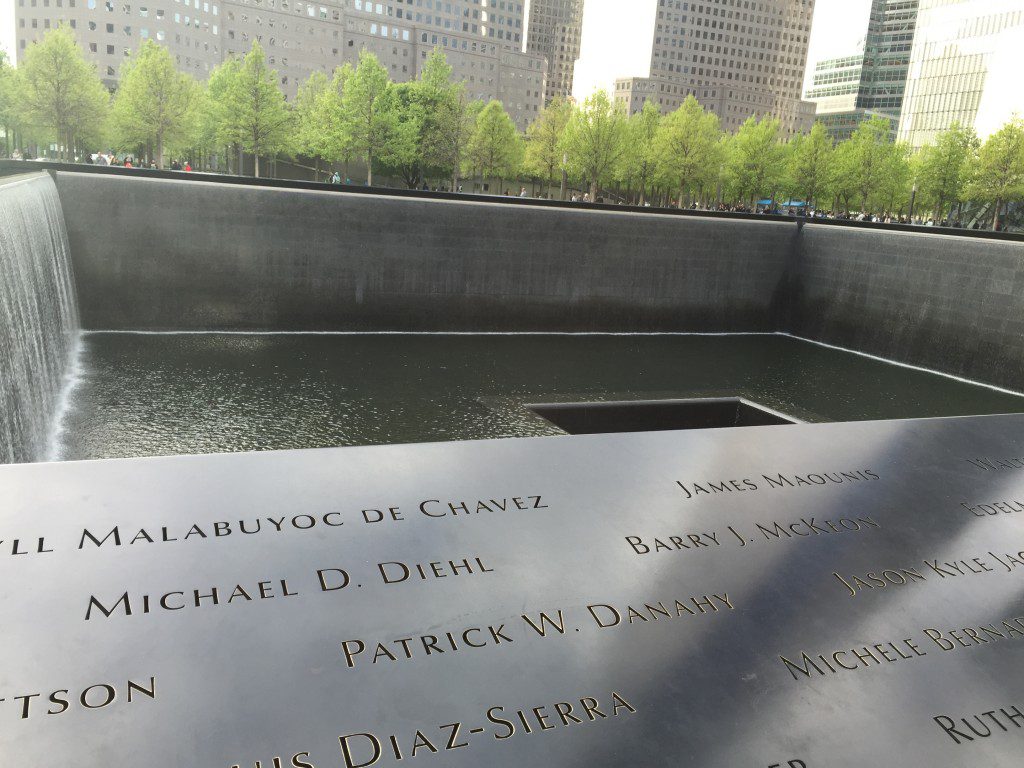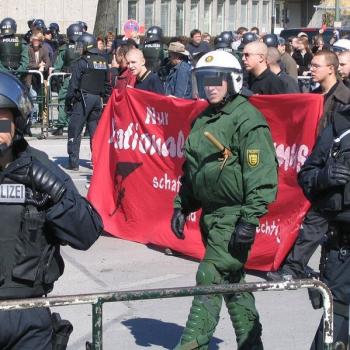![From Wikipedia: https://commons.wikimedia.org/wiki/File%3AFinsbury_Park_mosque_-_panoramio.jpg; Olof Lagerkvist [CC BY 3.0 (http://creativecommons.org/licenses/by/3.0)], via Wikimedia Commons](https://wp-media.patheos.com/blogs/sites/533/2017/06/Finsbury_Park_mosque_-_panoramio.jpg)
The name of the Finsbury Park attacker has now been released: Darren Osborne, a 47 year old man from Cardiff, who ranted that “this is for London Bridge” after the attack, according to eyewitness accounts.
According to neighbors, he was not known or perceived of as racist, but was “shouty” and his mother reported that “had been on medication for mental health problems.”
He is alleged to have expressed increasingly antagonistic views towards Muslims in the weeks since the London Bridge atrocity. . .
Neighbour Saleem Naema, 50, a taxi driver, said: “I can’t believe it. I know him. I’ve lived here for five years, he was already living here when I moved in.
“If I ever needed anything he would come. I just can’t believe that he did that. I am a Muslim.”
So the story seems to be: man with anger management issues loses it when terrorists attack, and seeks revenge by going after worshippers at a prominent religious site connected to the religion.
Is this terrorism?
Is this a “hate crime”? Is terrorism being re-defined as we speak to encompass “hate crimes”?
Or is it something else?
The UK, as it happens, has a legislative definition of terrorism, from the Terrorism Act of 2000. Note that this predates the September 11th attacks, and seems to have its origins in their longstanding problems with the IRA, which we in the U.S. have forgotten about as a non-Islamic terrorist organization. Here it is:
Section 1. –
(1) In this Act “terrorism” means the use or threat of action where-
(a) the action falls within subsection (2),
(b) the use or threat is designed to influence the government [or an international governmental organisation][2] or to intimidate the public or a section of the public, and
(c) the use or threat is made for the purpose of advancing a political, religious[, racial][3] or ideological cause.
(2) Action falls within this subsection if it-
(a) involves serious violence against a person,
(b) involves serious damage to property,
(c) endangers a person’s life, other than that of the person committing the action,
(d) creates a serious risk to the health or safety of the public or a section of the public, or
(e) is designed seriously to interfere with or seriously to disrupt an electronic system.
(3) The use or threat of action falling within subsection (2) which involves the use of firearms or explosives is terrorism whether or not subsection (1)(b) is satisfied.
So whether this attack was terrorism doesn’t seem to require, according to this definition, that the individual be affiliated with , or inspired by, an organized group like ISIS, only that the action is intended to advance a “political, religious, racial or ideological cause” and that it is intended to “intimidate the public or a section of the public.”
Is revenge a “cause”? Does mental illness influence whether an action is determined to intend to “intimidate the public”? In fact, the more difficult part of the definition is this latter part — how do you separate out an explicit “intention to intimidate”?
But beyond this definition, it seems to me that terrorism has become another word in that battle of words. It signifies importance: hence the demand that the Finsbury Park attack be classified as such was a matter of proving that the authorities cared sufficiently. And, in the U.S., arguments periodically surface on whether attacks by racists like Dylan Roof are “terrorism” or whether lynchings, in the past, were.
And Nabra Hassanen, the Muslim teen girl who was killed in Virginia early Sunday morning, was lumped in together with this attack, with twitter (and the Huffington Post) demanding that this, too, be labelled “terrorism”; now it’s being labelled by the police as “road rage” though the Muslim community rejects this, e.g.:
“Road rage. Indeed,” tweeted Rabia Chaudry, an attorney and senior fellow at the Washington-based U.S. Institute of Peace. “If you think for a minute that her appearance had nothing to do with this crime, you’re lying to yourself.”
(In a twist, the girl’s killer is an illegal immigrant from El Salvador.)
So what happens next?
UPDATE:
Turns out, when I opened the Tribune today at lunch, there was an article on exactly the question of “what is terrorism?” It was a reprinting of a Washington Post article that precedes the Finsbury Park attack, and instead addresses the question of whether James T. Hodgekinson was a terrorist. (The gist of it is summarized at International Business Times if you’ve used up your views.) And this article pretty much discards the question of discerning whether a killing is “terrorism” or not, but simply says that, absent a legal definition in the United States, and given that the common understanding that intent distinguishes terrorism from other mass killings is a fairly murky thing to discern in many cases,
One first step toward resolving the question of “what is terrorism?” — at least in the colloquial sense — is to stop focusing so much on the perpetrator’s perceived intent and to look more at the effects of the violent act. Today, attackers such as Hodgkinson, Hasan, Rizwan, Malik, Loughner and Roof have one thing clearly in common: Even if it’s not clear why, they want to kill as many people as possible. That should be enough to call them all terrorists.
Which is, on the one hand, makes a moral point that mass killings are all bad because they indeed kill people regardless of the motivation, but it misses the point that motivation does matter for us to understand the event, and that there is a meaningful difference in how we react to a killer with no motivation other than serious mental illness vs. someone who thinks he’s advancing a cause.
Image: From Wikipedia: https://commons.wikimedia.org/wiki/File%3AFinsbury_Park_mosque_-_panoramio.jpg; Olof Lagerkvist [CC BY 3.0 (http://creativecommons.org/licenses/by/3.0)], via Wikimedia Commons













